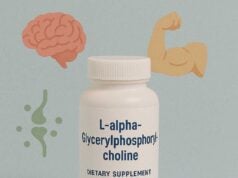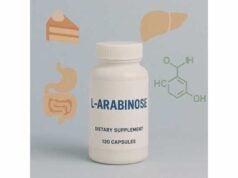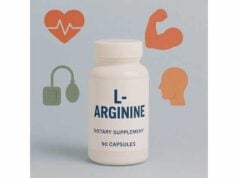
Leptin is a hormone that helps the brain gauge the body’s energy stores and regulate appetite, metabolism, and many downstream pathways. A “leptin peptide” refers to therapeutic leptin (most commonly the prescription medicine metreleptin) used to replace leptin when the body cannot produce enough. Unlike most supplements, leptin is not an over-the-counter product for general weight loss. It is a prescription biologic reserved for specific, rare conditions—particularly generalized lipodystrophy—where leptin deficiency drives severe metabolic complications such as extreme hypertriglyceridemia, fatty liver, and hard-to-control diabetes. When used for the right patient under specialist care, leptin replacement can reduce triglycerides, improve glycemic control, and decrease liver fat.
This guide explains what leptin therapy is (and is not), how it works, potential benefits, who might be considered for treatment, dosing principles your clinician may use, and the side effects and monitoring requirements that come with a potent peptide hormone. You’ll also find practical, people-first advice on safe use, storage, and what to expect in the first weeks and months if you’re prescribed leptin.
Quick Overview
- Replacing missing leptin can lower triglycerides and improve blood sugar in generalized lipodystrophy.
- Not for general obesity: common obesity often involves leptin resistance, so added leptin does not lead to weight loss.
- Typical starting dose for adults is 2.5–5 mg subcutaneously once daily, titrated by response under medical supervision.
- Avoid if you have hypersensitivity to leptin/metreleptin or use it for weight loss without documented leptin deficiency.
Table of Contents
- What leptin therapy actually is
- How leptin works in the body
- Who might benefit and expected outcomes
- How to use leptin therapy safely
- Dosage, titration, and administration
- Side effects, interactions, and risks
- Evidence at a glance and key takeaways
What leptin therapy actually is
Leptin is a hormone made primarily by fat cells. It acts as a messenger to the brain, signaling how much energy is stored in body fat and helping coordinate appetite, energy expenditure, and metabolic processes. In most people with obesity, leptin levels are normal or high, yet the brain responds weakly, a state often called leptin resistance. In this common scenario, giving more leptin does not reliably cause weight loss.
Leptin therapy refers to prescription leptin replacement—most often the recombinant human leptin analog called metreleptin—administered to patients with very low leptin due to rare disorders. The clearest indication is generalized lipodystrophy (congenital or acquired), where there is a near-absence of adipose tissue and, therefore, leptin. Without enough leptin, patients develop severe hypertriglyceridemia, insulin resistance, liver fat accumulation, and fatty liver–related inflammation. Restoring leptin helps normalize the body’s energy sensing and can improve those metabolic complications.
It’s important to distinguish metreleptin from cosmetic peptides or gym-marketed “fat loss” injectables. Metreleptin is a prescription biologic with strict safety requirements, including a Risk Evaluation and Mitigation Strategy (REMS) program in some countries. It is not approved for treating common obesity or mild leptin fluctuations. In fact, using leptin in people without leptin deficiency may carry risks without evidence of benefit.
Leptin therapy is generally prescribed and monitored by endocrinologists or metabolic specialists. Baseline evaluation typically includes fasting triglycerides, A1C or fasting glucose, liver enzymes, and possibly imaging for liver fat. Clinicians also assess for secondary contributors to metabolic disease and review other medications, especially insulin and insulin secretagogues, since improvement in insulin sensitivity with leptin can change dose needs.
For families and caregivers, leptin therapy can feel like a turning point after years of difficult management. Yet success depends on careful patient selection, realistic expectations, and consistent follow-up. Think of leptin as a cornerstone for a very specific house: it stabilizes the foundation in leptin-deficient states but is not a universal tool for weight control.
How leptin works in the body
Leptin’s central role is to tell the brain “how fed” the body is based on fat stores. When leptin is low—as in generalized lipodystrophy—the brain interprets this as an energy shortage, stimulating appetite and adjusting hormones to conserve energy. Metabolic pathways shift, often worsening insulin resistance and increasing fat deposition in the liver and other organs.
Administered leptin (metreleptin) binds to leptin receptors in the hypothalamus and other tissues, restoring a more accurate picture of energy sufficiency. This can lead to:
- Reduced appetite and improved satiety signals in people who truly lack leptin.
- Improved insulin sensitivity, which may be reflected by lower fasting glucose and reduced insulin requirements in those previously needing high doses.
- Lower triglycerides and reduced hepatic steatosis (fatty liver), which, over time, may improve liver enzymes and inflammation.
- Secondary benefits in endocrine axes that respond to energy availability, such as normalization of reproductive function in some hypoleptinemic states, and more stable neuroendocrine signaling.
Why leptin does not produce reliable weight loss in common obesity comes down to leptin resistance: the brain is bathed in leptin, but the signal is blunted. Multiple mechanisms have been proposed, including impaired transport across the blood–brain barrier, receptor or post-receptor signaling defects, and inflammatory signaling within the hypothalamus. In resistant states, giving more leptin is like shouting through a turned-down microphone—louder is not clearer.
On the other hand, when leptin is truly deficient, even physiological replacement can be transformative. Triglycerides may fall substantially; insulin sensitivity often improves; and liver fat can diminish. These effects stem from “restoring normal,” not “supercharging metabolism.” Patients should expect steady metabolic improvements rather than dramatic, rapid weight changes unless profound hyperphagia and weight gain were driven by leptin deficiency itself.
Finally, leptin interacts with other hormones and cytokines. For example, improved insulin sensitivity may lower requirements for insulin or sulfonylureas; conversely, catabolic stress or infection can alter leptin dynamics. That’s why clinicians titrate metreleptin based on clinical response and labs—not on a one-size-fits-all chart.
Who might benefit and expected outcomes
The most clearly defined beneficiaries of leptin therapy are patients with congenital or acquired generalized lipodystrophy who show evidence of leptin deficiency accompanied by serious metabolic complications. Typical features include very low body fat despite normal or high appetite, extreme hypertriglyceridemia (often >500 mg/dL), insulin-resistant diabetes requiring escalating medications, and fatty liver disease. In these patients, leptin replacement targets the root defect: insufficient leptin signaling.
Expected benefits may include:
- Triglyceride reduction. Many patients experience clinically meaningful drops in fasting triglycerides, which can lower the risk of pancreatitis and reduce the need for multiple lipid-lowering drugs.
- Improved glycemic control. As insulin sensitivity improves, fasting glucose and A1C can decline. Some patients need less insulin or fewer oral agents, with close monitoring to avoid hypoglycemia.
- Reduced liver fat and improved liver enzymes. Over time, markers of hepatic steatosis and inflammation may improve, supporting liver health.
- Appetite and satiety. If hyperphagia was driven by leptin deficiency, appetite can normalize, making nutrition plans more sustainable.
- Quality-of-life measures. Stabilizing metabolic parameters often reduces medication burden, clinic visits for acute complications, and the daily stress of refractory hyperglycemia or triglyceride spikes.
Who is not a candidate? People pursuing weight loss for typical obesity, athletes seeking performance aids, or anyone without documented leptin deficiency are not appropriate for leptin therapy. Metreleptin is explicitly not indicated for weight loss in the general population. It is also contraindicated in patients with a history of serious hypersensitivity to metreleptin or its components, and it must be used cautiously in those with hematologic malignancy risks or unexplained immunologic abnormalities.
What if your presentation is atypical? Some patients have partial lipodystrophy or other rare hypoleptinemic states. Evidence and access are more variable in those groups, and the decision to try leptin involves a thorough risk–benefit discussion, payer considerations, and careful baseline and on-therapy monitoring. For individuals with partial lipodystrophy, alternative and adjunctive approaches—nutritional therapy, triglyceride-lowering agents, insulin sensitizers—often remain first-line, with specialist consultation guiding any consideration of leptin.
Finally, the benefits of leptin replacement are optimized when paired with personalized nutrition (e.g., limiting simple sugars to protect triglycerides), regular activity as tolerated, and consistent lab monitoring. Leptin is not a substitute for these supports; it is a metabolic tool that helps them work better.
How to use leptin therapy safely
Because metreleptin is a biologic hormone, safe use hinges on a structured care plan:
1) Specialist oversight and enrollment requirements.
In some jurisdictions, metreleptin is dispensed under a REMS program to ensure prescribers, pharmacists, and patients understand serious risks (including the potential for neutralizing antibodies and a possible risk of lymphoma in certain contexts). Before the first dose, your clinical team documents the indication, reviews allergies, and establishes a monitoring schedule.
2) Baseline labs and staging.
Typical baselines include fasting lipid panel (with emphasis on triglycerides), A1C or fasting glucose, liver enzymes (ALT, AST), and complete blood count. Some teams add hepatic imaging (e.g., ultrasound or MRI-PDFF) and autoantibody screening depending on history.
3) Storage and handling.
Vials require refrigeration and protection from light per product instructions. You’ll reconstitute the lyophilized powder with the provided diluent. Do not shake vigorously; swirl gently to avoid foaming. Use within the labeled time window after reconstitution and discard any unused solution according to instructions.
4) Injection technique.
Metreleptin is given subcutaneously once daily. Preferred sites include the abdomen or thigh, rotating locations to reduce skin irritation or lipoatrophy. Clean the skin with an alcohol swab, use a new sterile needle and syringe, and inject at the angle recommended by your care team.
5) Medication coordination.
When leptin improves insulin sensitivity, doses of insulin or sulfonylureas often need to be reduced to prevent hypoglycemia. Your clinician may pre-emptively decrease these doses and ask you to check blood glucose more frequently during the first one to two weeks.
6) Safety signals and when to call.
Seek urgent care for signs of hypersensitivity (hives, wheeze, swelling, dizziness). Report persistent injection-site reactions, unexpected infections, unusual bruising or bleeding, swollen lymph nodes, or fatigue that feels out of proportion. Keep a symptom and glucose log during titration.
7) Follow-up cadence.
Early follow-up typically occurs every 2–4 weeks for dose adjustments, with labs (triglycerides, glucose indices, liver enzymes) repeated per your clinician’s plan. Once stable, visits may spread out, but periodic reassessment remains essential.
8) Lifestyle partnership.
Therapy works best alongside nutrition tailored to your lipid and glucose targets (e.g., emphasizing lean protein and fiber, limiting simple sugars and alcohol that can spike triglycerides) and activity matched to your abilities. Small, consistent habits magnify the metabolic gains from leptin.
9) What leptin therapy is not.
It is not a casual add-on for weight management, a replacement for diabetes education, or a “metabolic hack.” It is a targeted hormone replacement used when the body cannot make enough leptin and metabolic complications are significant.
Dosage, titration, and administration
Your exact dose is individualized. The following summarizes typical, label-aligned principles your clinician may use; do not self-dose.
Starting dose (adults).
A common approach is once-daily subcutaneous dosing with an initial dose in the 2.5–5 mg range, with titration based on metabolic response and tolerability. Lower starting doses are often used in men and smaller-bodied adults; higher starting doses may be considered for women or individuals with more severe metabolic derangements, always within labeled guidance.
Titration.
Doses are adjusted in small steps to target improvements in triglycerides, glycemia, and liver enzymes while minimizing adverse effects. Your care team may review logs every 2–4 weeks initially. Some patients reach stable control at the starting dose; others require gradual increases. There is a maximum daily dose beyond which risks outweigh benefits; your clinician will avoid exceeding labeled limits.
Pediatrics.
Children and adolescents with generalized lipodystrophy (managed by experienced centers) are dosed by weight and development stage. Because growth and puberty change insulin sensitivity and energy needs, pediatric dosing is revisited frequently.
Administration tips.
- Inject at about the same time each day.
- If a dose is missed, follow your clinician’s instructions (do not double up without guidance).
- Use a new needle and syringe for each injection, and rotate sites to avoid skin issues.
- Do not mix leptin in the same syringe with other medicines.
- Never share pens, needles, or vials.
Concomitant diabetes therapy.
If you take insulin or insulin secretagogues, coordinate dose changes proactively. Many teams lower insulin doses at initiation and titrate back as needed. Keep glucose tablets or a source of fast-acting carbohydrate available, and check your blood glucose more often during dose changes.
Duration of therapy.
In leptin-deficient conditions like generalized lipodystrophy, leptin replacement is typically ongoing. Stopping therapy can allow triglycerides and glucose to worsen again. Any changes should be supervised and paired with close lab follow-up.
Procedures and illness.
During major illness or surgery, your team may adjust doses or temporarily pause therapy depending on risks and nutritional intake. Always inform all treating clinicians that you use metreleptin.
Side effects, interactions, and risks
Every powerful therapy carries risks. Understanding them up front helps you and your care team act early if something arises.
Common side effects.
- Headache, fatigue, or mild nausea in the first weeks.
- Injection-site reactions (redness, itching, discomfort).
- Abdominal pain, weight loss in those with significant hyperphagia at baseline.
- Upper respiratory symptoms in some patients.
Metabolic interactions.
- Hypoglycemia. As leptin improves insulin sensitivity, continuing prior insulin or sulfonylurea doses can cause low blood sugar. Proactive dose adjustments and more frequent glucose checks are standard during initiation and titration.
- Triglyceride dynamics. Triglycerides often fall substantially; your care team may reduce or simplify lipid-lowering regimens over time.
Immune considerations.
- Neutralizing antibodies. A serious concern is the development of anti-leptin antibodies that neutralize the therapy’s effect. This can blunt benefits and may be associated with infections or other immune effects. Clinicians monitor clinical response and may order assays when indicated.
- Malignancy warnings. There is a warning about the potential for lymphoma in certain contexts; your medical history and ongoing monitoring guide risk discussions.
Hypersensitivity.
Severe allergic reactions, including anaphylaxis, are possible. Immediate medical care is required for hives, throat swelling, wheeze, dizziness, or fainting after injection. Patients with known hypersensitivity to metreleptin or its excipients must not use the product.
Special populations.
- Pregnancy and lactation. Risk–benefit assessment is essential. Some patients with severe lipodystrophy-related complications may continue therapy under specialist guidance; others may pause. Contraception counseling and preconception planning are advisable.
- Pediatrics. Children are managed by centers experienced with growth, pubertal development, and immunologic monitoring.
- Hepatic or renal impairment. Dosing and monitoring may be adjusted.
What to report promptly.
Unexplained fevers, persistent infections, swollen glands, unusual bleeding or bruising, severe fatigue, or marked changes in glucose needs. Keep scheduled lab visits—small deviations can be early clues that allow quick action.
Bottom line on safety.
Most patients who truly need leptin replacement tolerate it well and gain significant metabolic stability. The key is disciplined monitoring, open communication with your care team, and respecting the medicine’s boundaries—using it only for indications where benefits are proven.
Evidence at a glance and key takeaways
Where the evidence is strongest.
- Generalized lipodystrophy with leptin deficiency. Leptin replacement improves triglycerides, glycemic control, and liver fat. These outcomes translate into fewer pancreatitis scares, better diabetes management, and an easier path through day-to-day living.
- Physiologic replacement, not pharmacologic “boosting.” Restoring the missing signal normalizes systems that were set to “energy emergency.” That’s why the benefits are broad and durable in the right population.
Where the evidence is limited or negative.
- Common obesity. Leptin resistance, not deficiency, dominates; adding leptin does not produce meaningful or consistent weight loss.
- Non-lipodystrophy hypoleptinemic states. Some conditions have suggestive data, but access and indications vary, and decisions are individualized at expert centers.
Practical, patient-centered insights.
- Expect metabolic wins before scale changes. Triglycerides and A1C often improve first; weight may not change much unless hyperphagia was prominent.
- Your other medicines will likely change. Dose reductions—especially insulin—are common and should be planned, not reactive.
- Leptin works best with lifestyle scaffolding. Nutrition and activity need less “willpower” once the biology is corrected, but they remain essential.
- Consistency is protective. Daily, on-time injections and reliable follow-up keep the therapy effective and safe.
- Be alert, not anxious. Know the red-flag symptoms, keep communication lines open, and celebrate each lab that moves in the right direction.
The take-home.
Leptin peptide therapy is a targeted, high-impact option for a narrow group of patients whose bodies cannot make enough leptin. For them, it can be life-changing. For everyone else, focusing on proven nutrition, activity, sleep, and clinician-guided therapies is the safer, smarter path.
References
- MYALEPT- metreleptin injection, powder, lyophilized, for solution 2023 (Label)
- MYALEPT REMS Program 2024 (Program Information)
- HIGHLIGHTS OF PRESCRIBING INFORMATION 2024 (Label Summary)
Medical Disclaimer
The information in this article is educational and does not replace personalized medical advice, diagnosis, or treatment. Leptin therapy (metreleptin) is a prescription biologic with specific indications, safety requirements, and monitoring needs. Do not start, stop, or change any medication or dosage based on this article. Speak with a qualified clinician who can evaluate your medical history, labs, and goals.
If you found this helpful, please consider sharing it with a friend or on your favorite platform, and follow us for more balanced, evidence-informed guides. Your support helps us continue producing high-quality health content.










